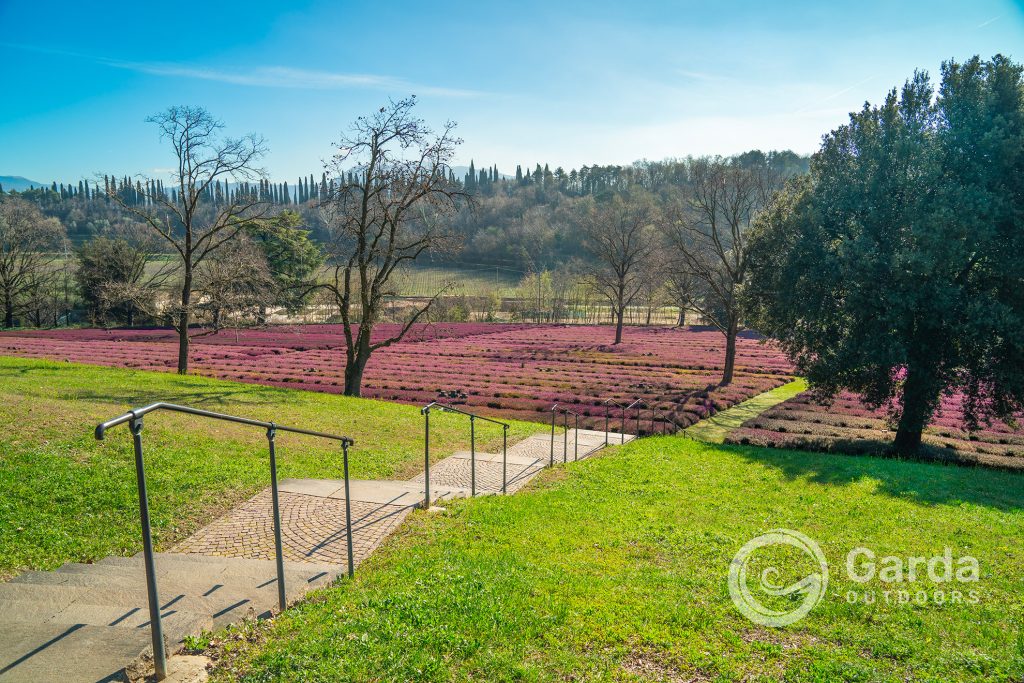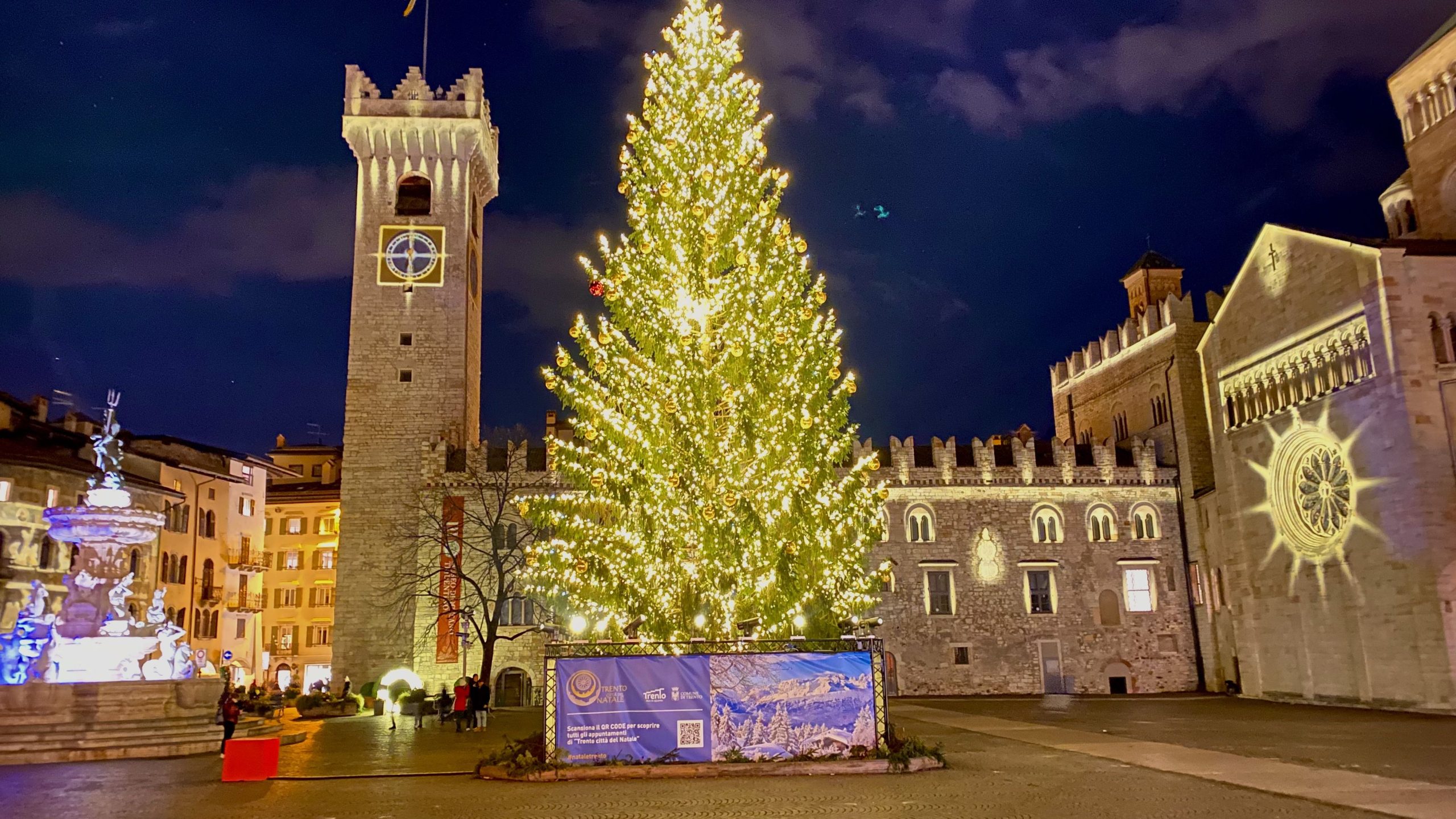Purple waves on a hill overlooking the lake and mountains: we are at the German Military Cemetery in Costermano sul Garda (Verona).
This cemetery contains the bodies of more than 22,000 German soldiers killed in the Second World War, taken from war cemeteries and other burial places in northern Italy.
Their disinterment was not easy; consider that to find the bodies we relied on incomplete sketches and information given orally by the local population.
43 SS officers and around five hundred non-commissioned officers and soldiers of the same formation are also buried here, some of whom were responsible for very serious crimes against humanity, such as the extermination of the Jews and the killing of Italian civilians.
This cemetery therefore aims to be “a place of conscience and remembrance, but also of warning”, as the German consul Axel Hartman said.
It was built between 1957 and 1967, designed by the architect Robert Tischler, who was later succeeded by Gerd Offenberg with some modifications.
On May 6, 1967 it was inaugurated and opened to the public, in the presence of approximately 8,000 people who placed more than 30 thousand carnations on the burial field.
The cemetery is managed by the German humanitarian association Volksbund Deutsche Kriegsgräberfürsorge e.V. on behalf of the Federal Government, which deals with the detection of the graves of German fallen soldiers abroad, their upkeep and maintenance. The cemetery is in fact very well kept and clean, with diligent gardeners who take care of the greenery.
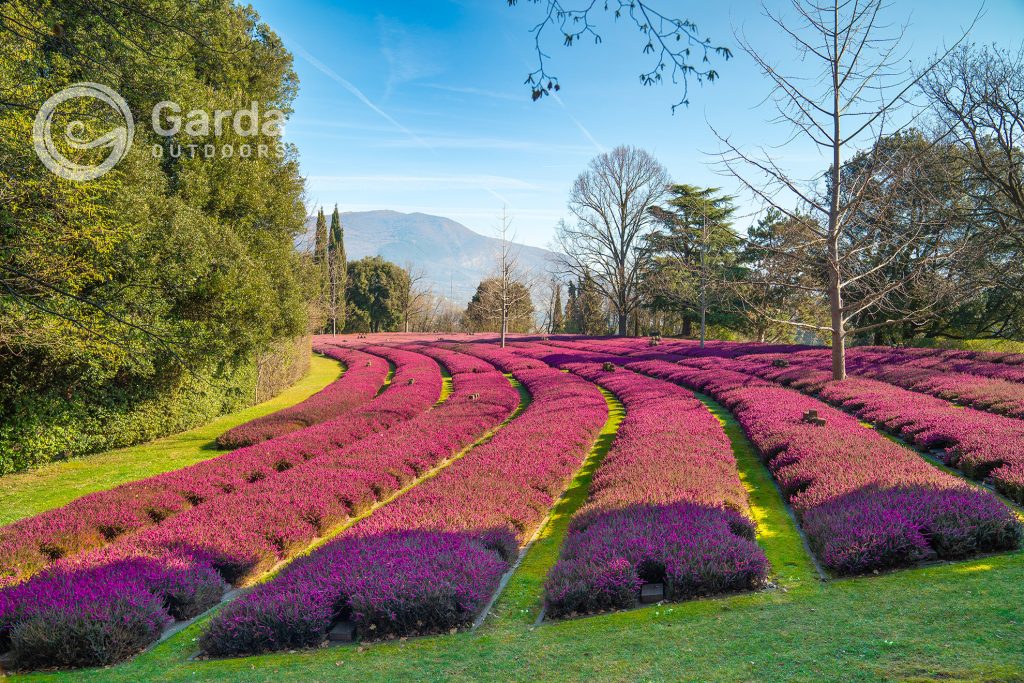
What to visit
The exhibition
In the monumental entrance, adorned with a mosaic floor and a bronze portal, there is also a small museum exhibition that tells the story of the cemetery, events of the Second World War and life anecdotes of some buried soldiers and their families. There is also a register of names with all the buried and missing.
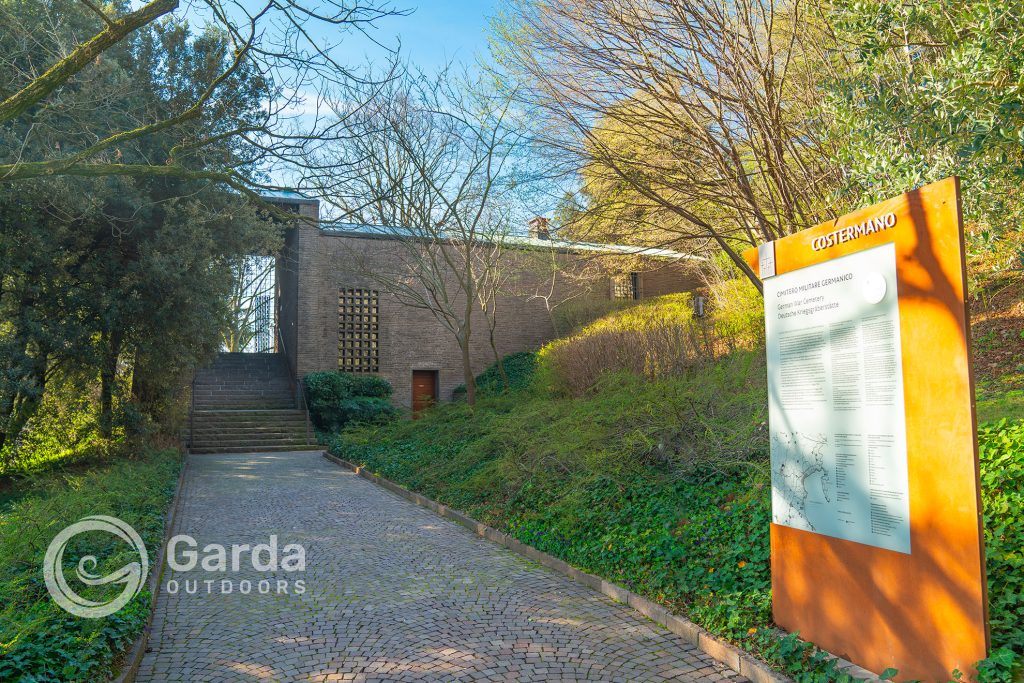
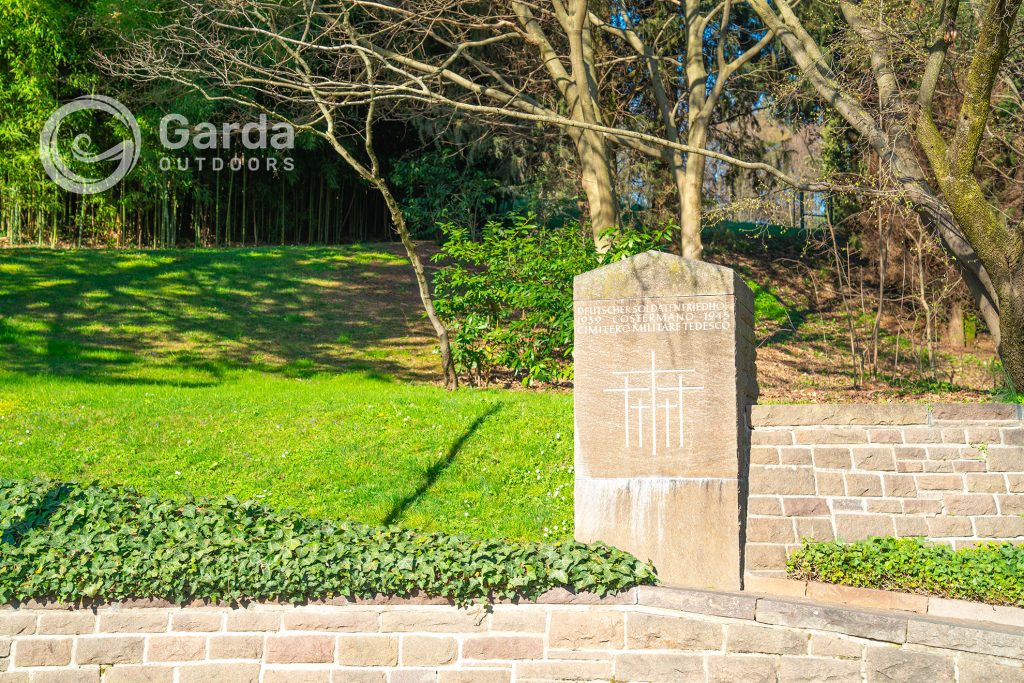
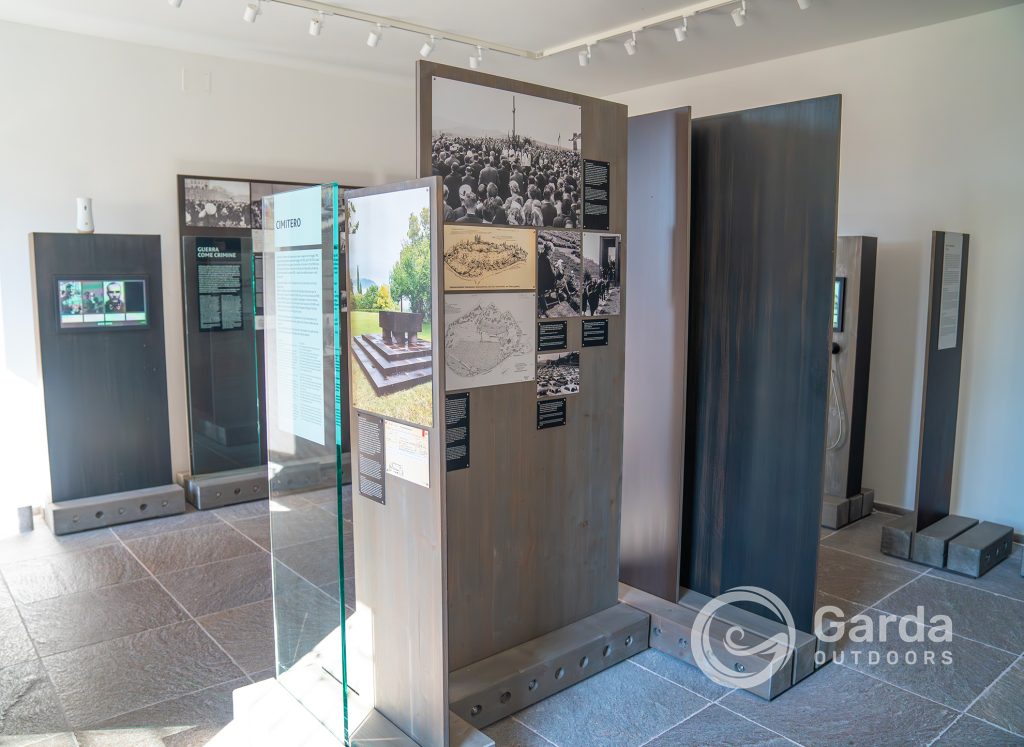
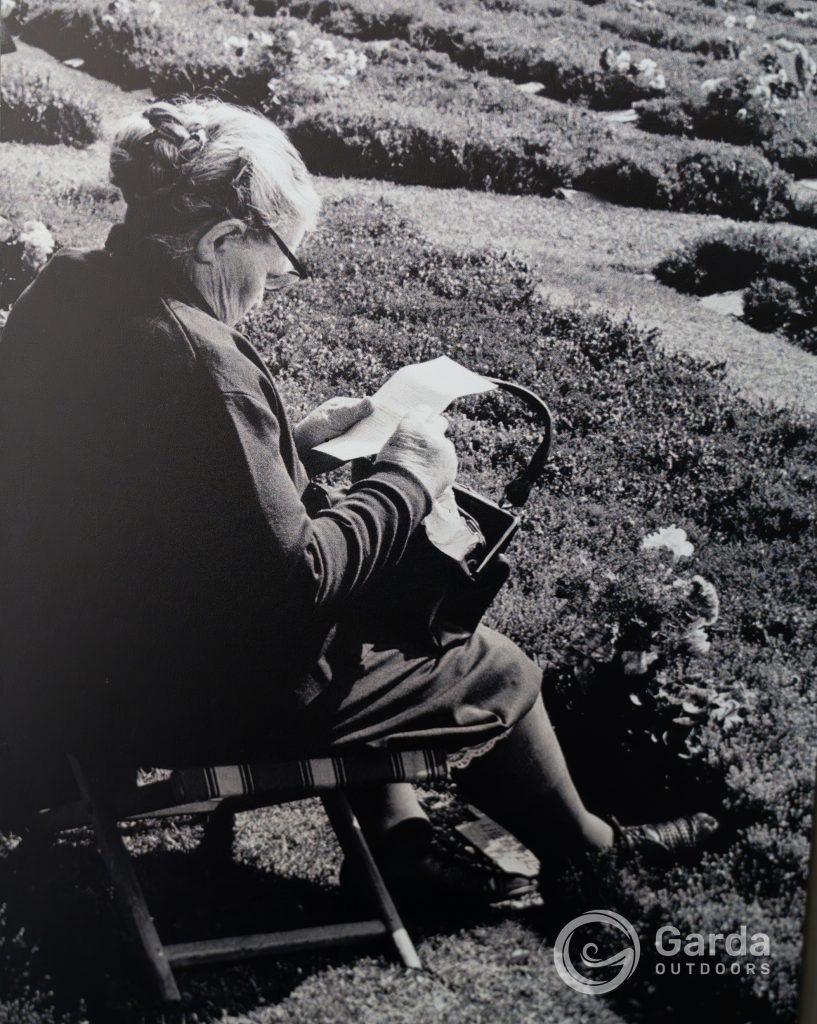
The 15 sectors
The cemetery is made up of fifteen sectors adorned with heather plants, which go up the hill. Each row of graves is numbered, with engraved headstones and neat groups of 3 crosses sticking out of the bushes.
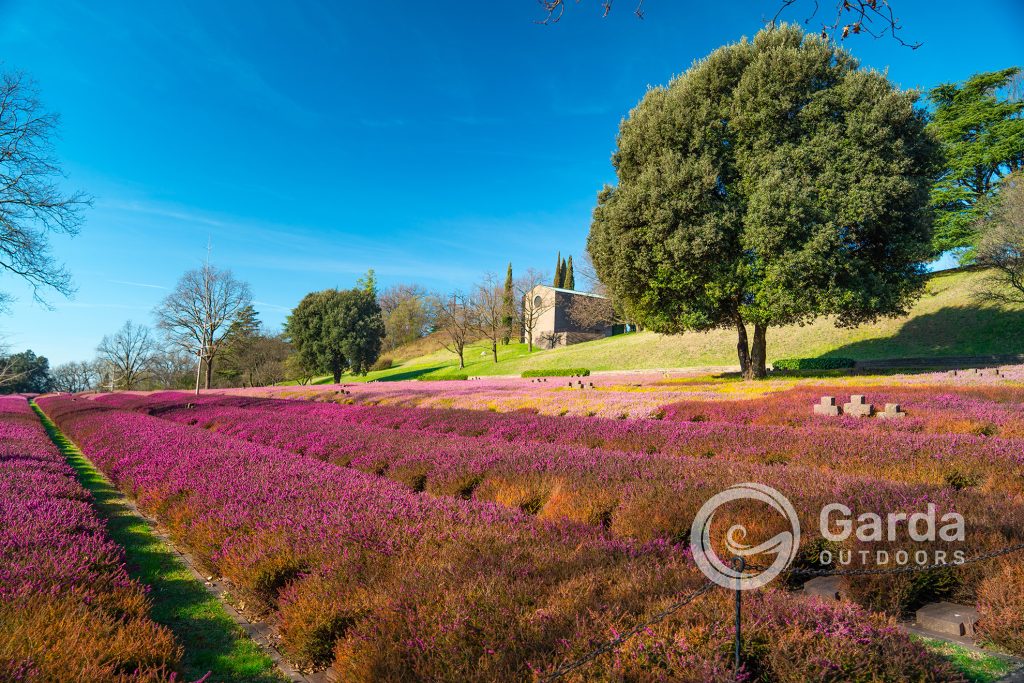
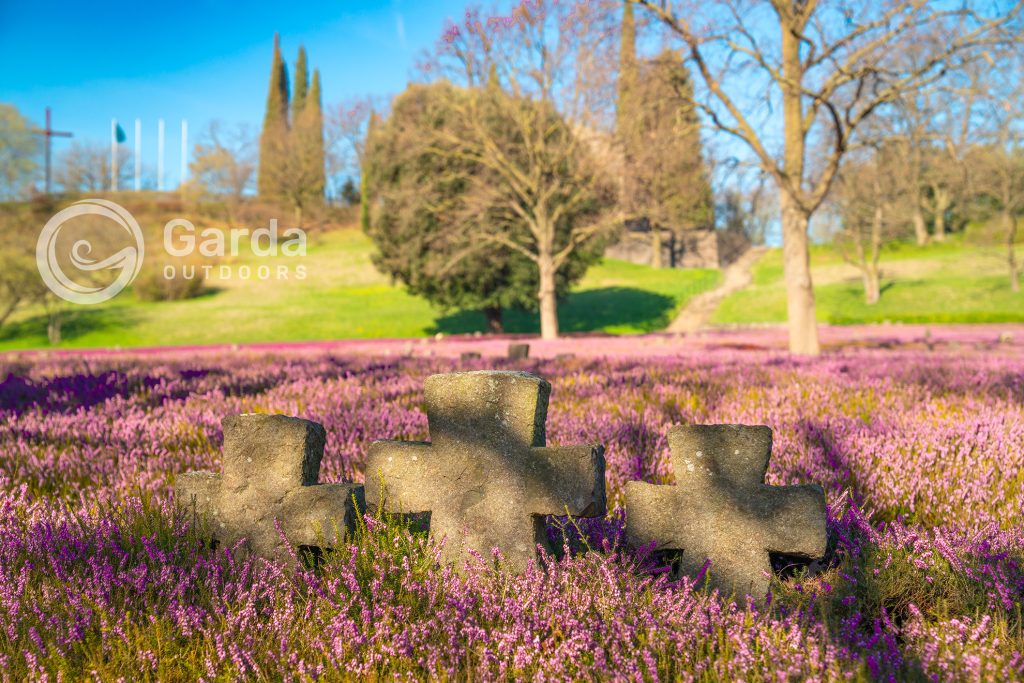
The chapel
The small chapel, on the top of the hill, contains the mass grave for all the bodies of unknown soldiers.
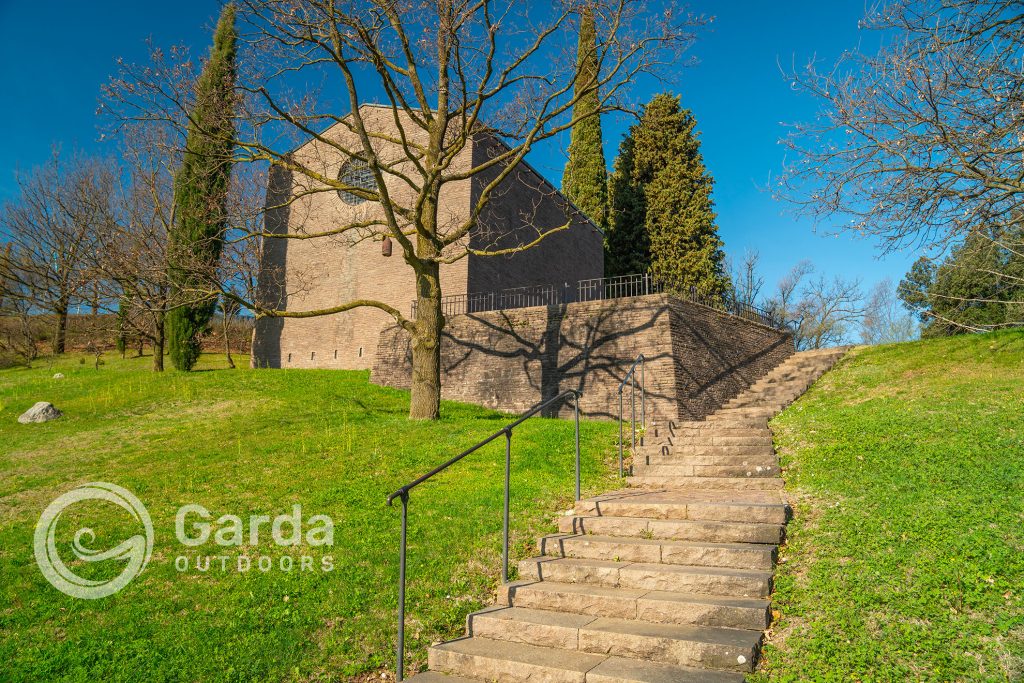
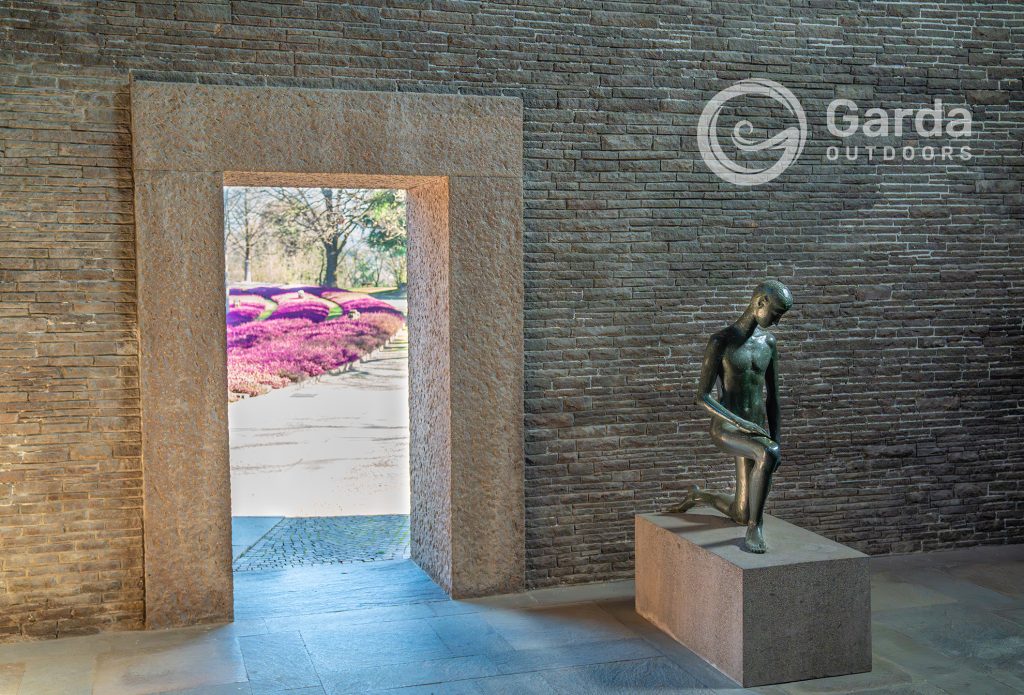
The geographic map
After the chapel there is a large ceramic map of northern Italy, which indicates the 37 provinces in which the fallen were previously buried and then moved to Costermano. Small crosses mark former battle areas.
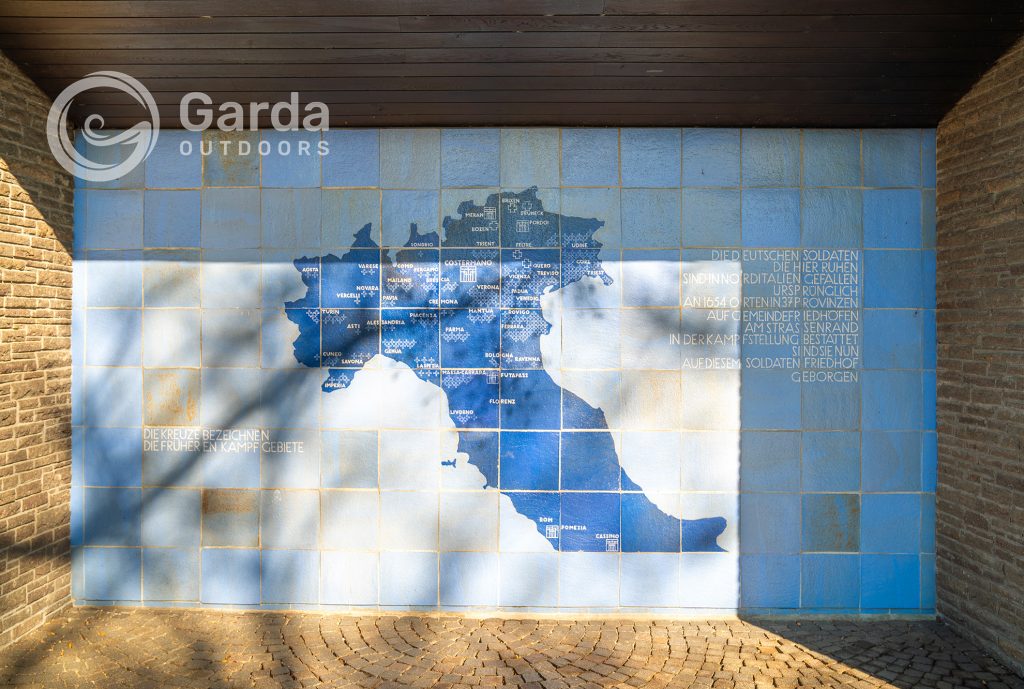
The altar with the cross
You can find them at the highest point of the cemetery. The iron cross is 8 meters high and, after the altar, there is a viewpoint with a panoramic view of Lake Garda (the fortress of Garda, Garda, Punta San Vigilio and on the opposite shore the Rocca of Manerba are clearly visible).
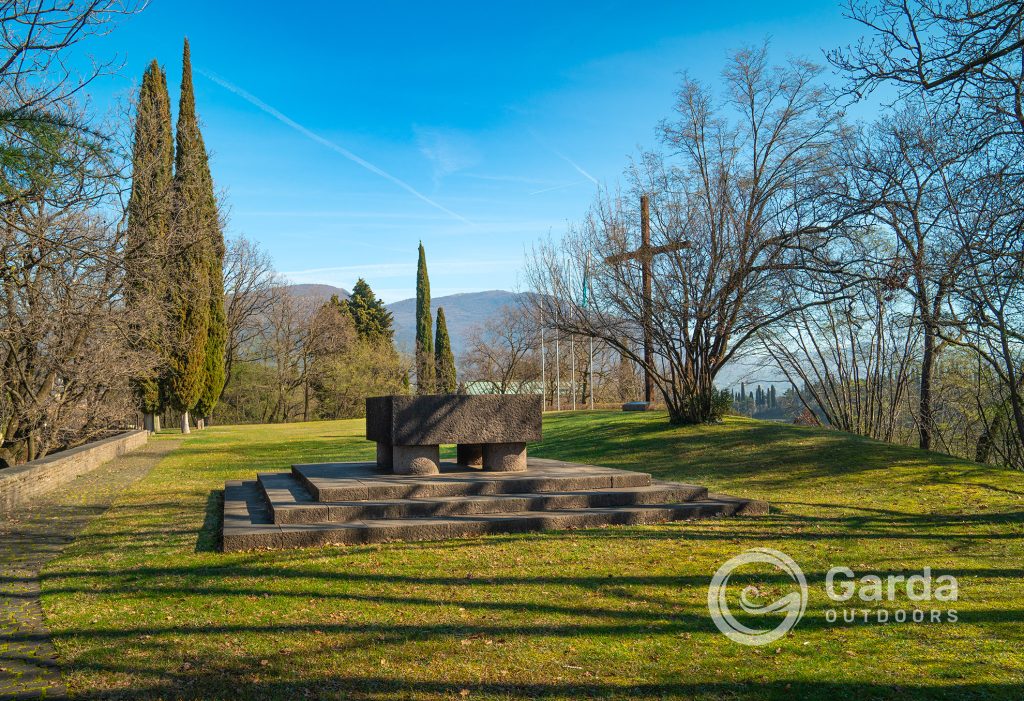
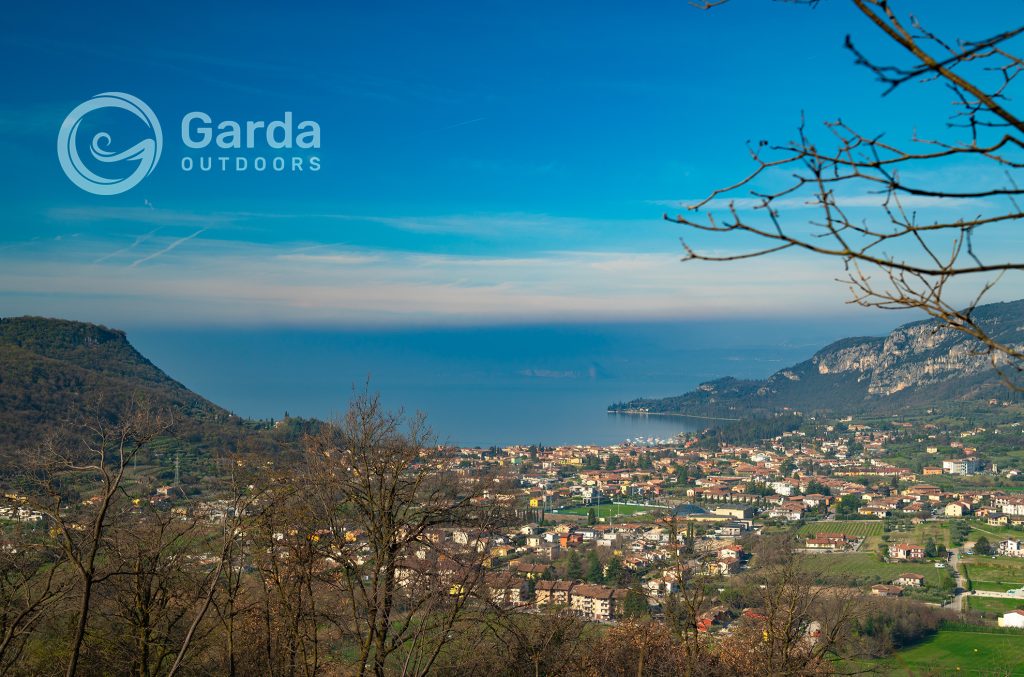
When to go to find heather in bloom
The mild Garda climate makes heather bloom between February and March. This is the most beautiful time to visit because the well-kept heather bushes literally color the hill purple.
For photographer friends we don’t have a best time to indicate: the photos in this article were taken in the morning shortly after opening hours. At sunset the sun is on the opposite side, putting the chapel on the top in backlight; but the play of light, the warm colors and the atmosphere certainly deserve some shots even at that time of the day.
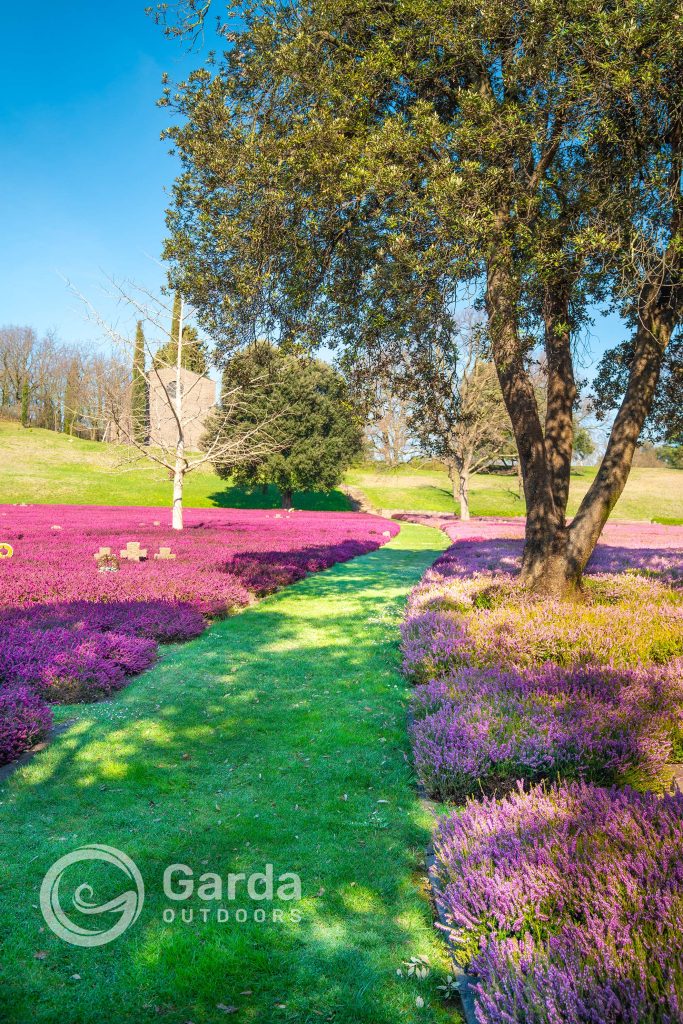
How to get there and opening hours
You reach the cemetery by taking Via Baesse in Costermano sul Garda (VR). The nearest motorway exit is Affi on Modena-Brennero. You can easily type “German military cemetery Costermano” into your navigator and get there without any problems.
At the entrance there is convenient free parking.
The new and beautiful Castion Veronese – Costermano – Albarè cycle path also passes through there.
The cemetery is open every day from 8:00 to 18:00. At the entrance, going down the stairs on the right, you will find the bathrooms with paid access (50 euro cents per person).
We inform you that dogs are prohibited from entering.
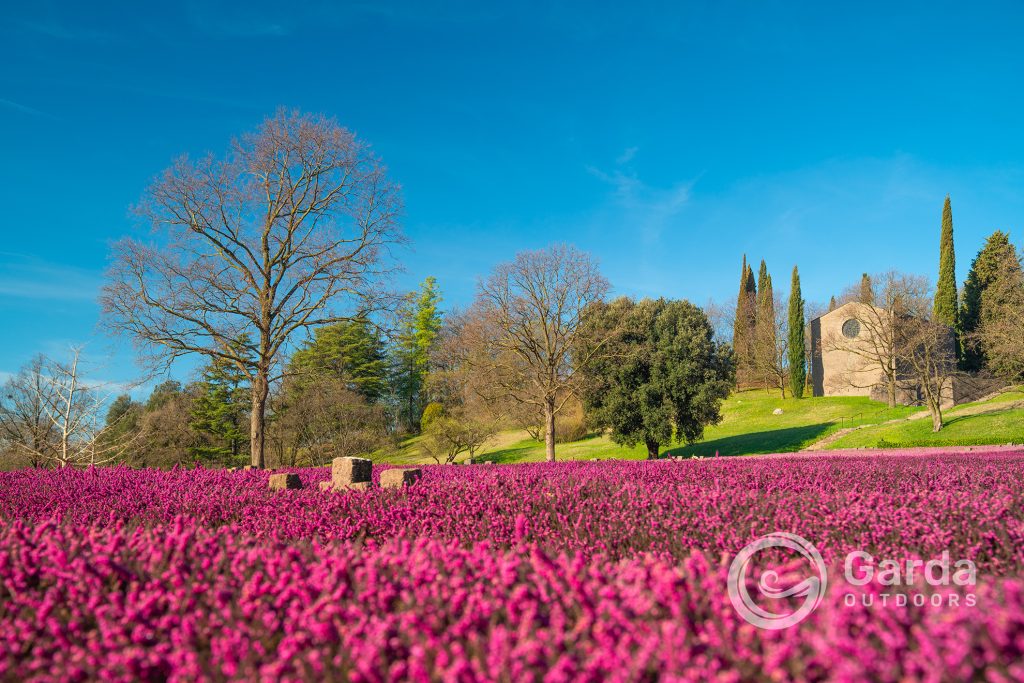
This place is much more than a cemetery. If you stop to read its history and memories, you can really feel and understand the pain that the war brought. Then like me, you will wonder why it systematically happens again.
I don’t have an answer to give but, if we observe in our own small way, the lack of empathy which then leads to hatred and envy, within a simple condominium meeting, between work colleagues, between members of the same family, just translate all this on a more global level.
Let’s always try to put ourselves in the so-called “other person’s shoes” before passing judgment or having any type of reaction, which may save us a lot of bitter blood and time wasted on negative feelings, which take away sleep and health.
Bye dear Outdoors, every now and then there can be a serious reflection even in a tourist editorial like this, but always raise your hearts!
Silvia Turazza – Garda Outdoors editorial team
Choose where to stay, where to eat, and which experiences to have on Lake Garda
Visit the Garda Outdoors marketplace and discover the best deals for your stay here. You’ll find a world of opportunities!
